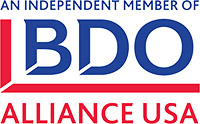
By Divya Gadre, CPA
Many nonprofits are dealing with the uncertainty of the ongoing pandemic as well as increased demand for their services. It’s a delicate balancing act, but with proper systems and support, nonprofits are up for the challenge. The first article of this two-part series covered how the sector has benefited from COVID-19 relief funds, along with best practices for complying with new accounting standards, safeguarding against cyberattacks in a hybrid or fully remote working environment, automating manual processes for greater efficiency, and implementing a successful diversity, equity and inclusion (DEI) strategy.
In this second part of the article series, we highlight five additional considerations for nonprofits around succession planning, funding volatility, remote management and leadership, planning for disruption and change management.
1. Succession Planning
Each employee plays an integral role in your nonprofit’s operations. An effective succession plan reflects this and will prepare your nonprofit for the departure of your chief executive officer as thoroughly as it would for the departure of your office manager.
A comprehensive succession plan is designed to ensure business continuity in the face of expected and unexpected departures alike. It focuses on retaining employees by offering opportunities for advancement to promising staff members and includes training initiatives to minimize the learning curve for new hires. It is important for nonprofit leadership to be transparent about the details of the succession plan and review the plan annually or semi‑annually to confirm it addresses the latest needs and developments.
This should be discussed with the board as well and appropriately communicated to other stakeholders. During the pandemic, many organizations practiced and thrived with this approach and didn’t think of it as a sensitive topic. Succession planning should be part of scenario planning and risk management planning.
2. Funding Volatility
From canceled events to shifts in donor behavior to stock market fluctuations, it’s easy to see why funding volatility has become a challenge for many nonprofits. It’s important to gain a clear understanding of your current funding mix, explore opportunities to enhance what’s working well and consider discontinuing what isn’t. This assessment will enable the organization to identify new programs that may offer more funding diversification to offset volatility.
As you consider new opportunities, you should review cash, accounts receivable and accounts payable daily. It’s also important to maintain adequate operating reserves, create a cash forecasting model, develop and adopt a risk tolerance statement that defines financial stability targets, and calculate key financial metrics for continuous monitoring.
3. Remote Management and Leadership
The pandemic has introduced hybrid and fully remote work models to many organizations, expanding nonprofits’ pool of job candidates and offering existing employees greater flexibility. That said, remote work can come with challenges of its own. Lack of in‑person and spontaneous interactions can exacerbate existing information silos, as well as feelings of loneliness in already isolated employees. Managers may find it difficult to oversee operations in a remote environment, and employees may find the blur between professional and home life draining.
Fortunately, there are several steps nonprofits can take to make remote work more comfortable and productive for all parties. Most importantly, lead with empathy. An empathetic leadership style inspires employee loyalty, especially in this time of imposed social isolation and uncertainty. Consider scheduling regular one‑on‑one videoconferences where employees can share any personal concerns and professional progress. Additionally, reiterating praise in organization‑wide videoconferences and taking every opportunity to encourage employee collaboration is important. By fostering a sense of community, you can help boost employee morale and reignite passion for your nonprofit’s mission. While you can lead with a personal touch, note that it’s also important to establish clear boundaries between personal and professional lives. For example, try to refrain from sending employees emails outside of business hours. After all, there’s a fine line between working from home and living at work.
4. Planning for Disruption
Disruption is to be expected, but it doesn’t have to throw your operation into a tailspin. You can plan for disruption by utilizing the following best practices:
- Engage in clear and honest communication with all stakeholders.
- Make informed decisions quickly and stand by them.
- Reward collaboration over competition by remaining open to employee feedback.
- Leverage technology to disseminate timely and accurate information to all levels of the organization.
- Start scenario planning and determine how you might react to a variety of contingencies.
- Take stock of what worked and what didn’t in your response to previous crises.
- Establish a culture that blends structure with agility.
- Establish clear documentation on succession planning. Establish a playbook that clearly documents who is responsible for what when a cyberattack happens.
These steps will help your nonprofit adjust to dynamic conditions without losing sight of or the ability to achieve your mission.
5. Change Management
Change is hard. In fact, according to Harvard Business Review, 78% of change management projects are unsuccessful. A variety of factors contribute to this bleak statistic, but many change management initiatives fail to align with corporate culture due to improperly defined objectives and poor project management. It can be especially challenging to explore operational changes without employee buy‑in, as a nonprofit’s staff is the heart of the organization. But be tactful—too much change at once can cause staff to lose momentum and confidence in the organization.
Impactful change requires clear communication as well as an obvious link between transformation and reward. Employees embrace change when they understand why it’s happening, even if they disagree with it. You should also be sure to communicate how their roles will be impacted, so there aren’t any surprises down the line. Create systems for measuring progress, hire employees who offer fresh perspectives and celebrate small wins to get everyone on board with your evolution. By linking transformation to realistic goals and rewards for your organization and its people, staff can feel more connected to the end results and be proud of the work involved.
There are many factors that nonprofits must consider as they look ahead. We’ve identified 10 through this two‑ part article series. Though these considerations may be daunting, a common thread runs through all best practices: Know where your nonprofit stands and strive to adapt to a changing environment through contingency planning, effective leadership and agile forecasting models.
Article reprinted from BDO Nonprofit Standard blog.




